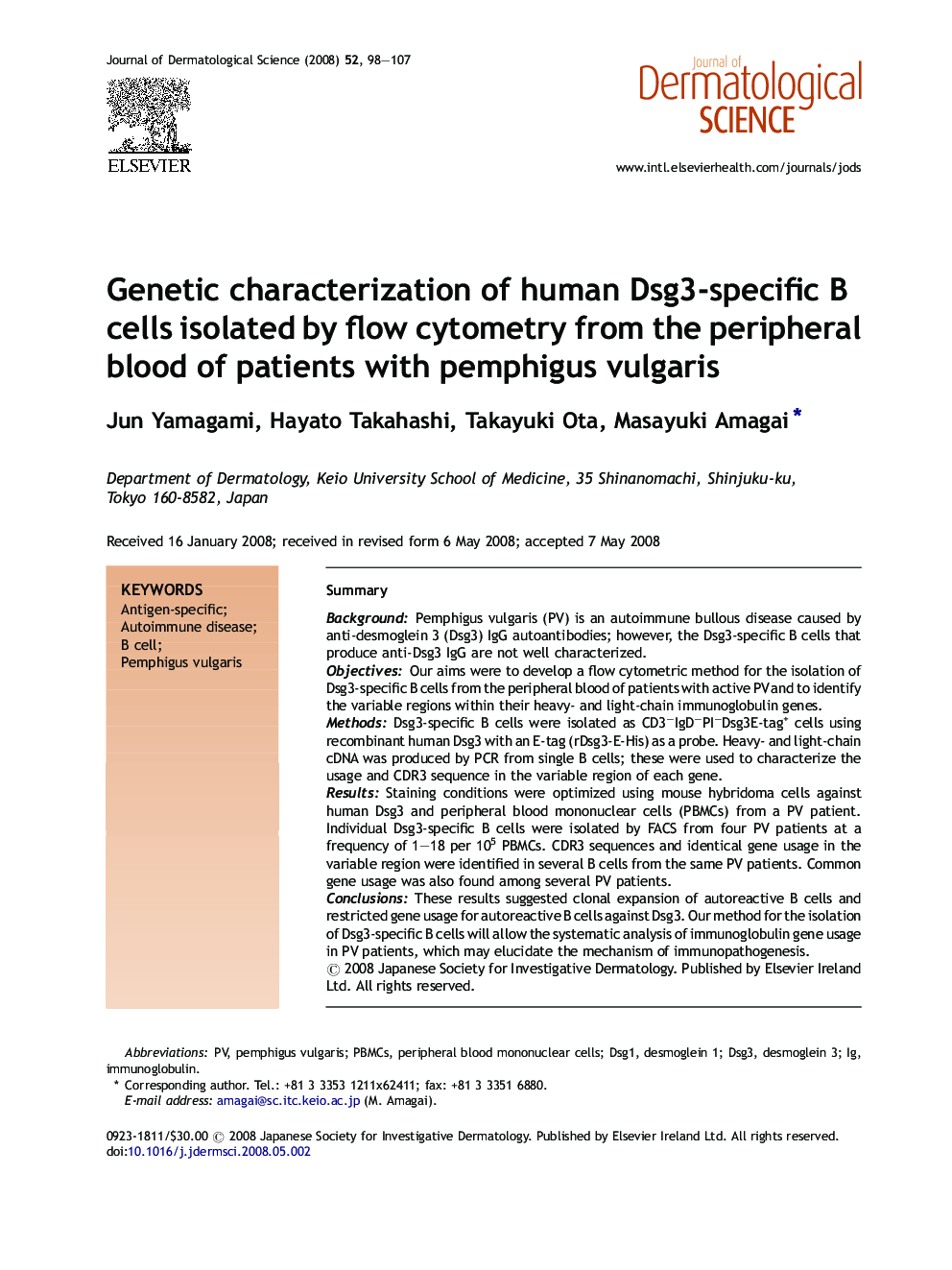| Article ID | Journal | Published Year | Pages | File Type |
|---|---|---|---|---|
| 3213904 | Journal of Dermatological Science | 2008 | 10 Pages |
SummaryBackgroundPemphigus vulgaris (PV) is an autoimmune bullous disease caused by anti-desmoglein 3 (Dsg3) IgG autoantibodies; however, the Dsg3-specific B cells that produce anti-Dsg3 IgG are not well characterized.ObjectivesOur aims were to develop a flow cytometric method for the isolation of Dsg3-specific B cells from the peripheral blood of patients with active PV and to identify the variable regions within their heavy- and light-chain immunoglobulin genes.MethodsDsg3-specific B cells were isolated as CD3−IgD−PI−Dsg3E-tag+ cells using recombinant human Dsg3 with an E-tag (rDsg3-E-His) as a probe. Heavy- and light-chain cDNA was produced by PCR from single B cells; these were used to characterize the usage and CDR3 sequence in the variable region of each gene.ResultsStaining conditions were optimized using mouse hybridoma cells against human Dsg3 and peripheral blood mononuclear cells (PBMCs) from a PV patient. Individual Dsg3-specific B cells were isolated by FACS from four PV patients at a frequency of 1–18 per 105 PBMCs. CDR3 sequences and identical gene usage in the variable region were identified in several B cells from the same PV patients. Common gene usage was also found among several PV patients.ConclusionsThese results suggested clonal expansion of autoreactive B cells and restricted gene usage for autoreactive B cells against Dsg3. Our method for the isolation of Dsg3-specific B cells will allow the systematic analysis of immunoglobulin gene usage in PV patients, which may elucidate the mechanism of immunopathogenesis.
